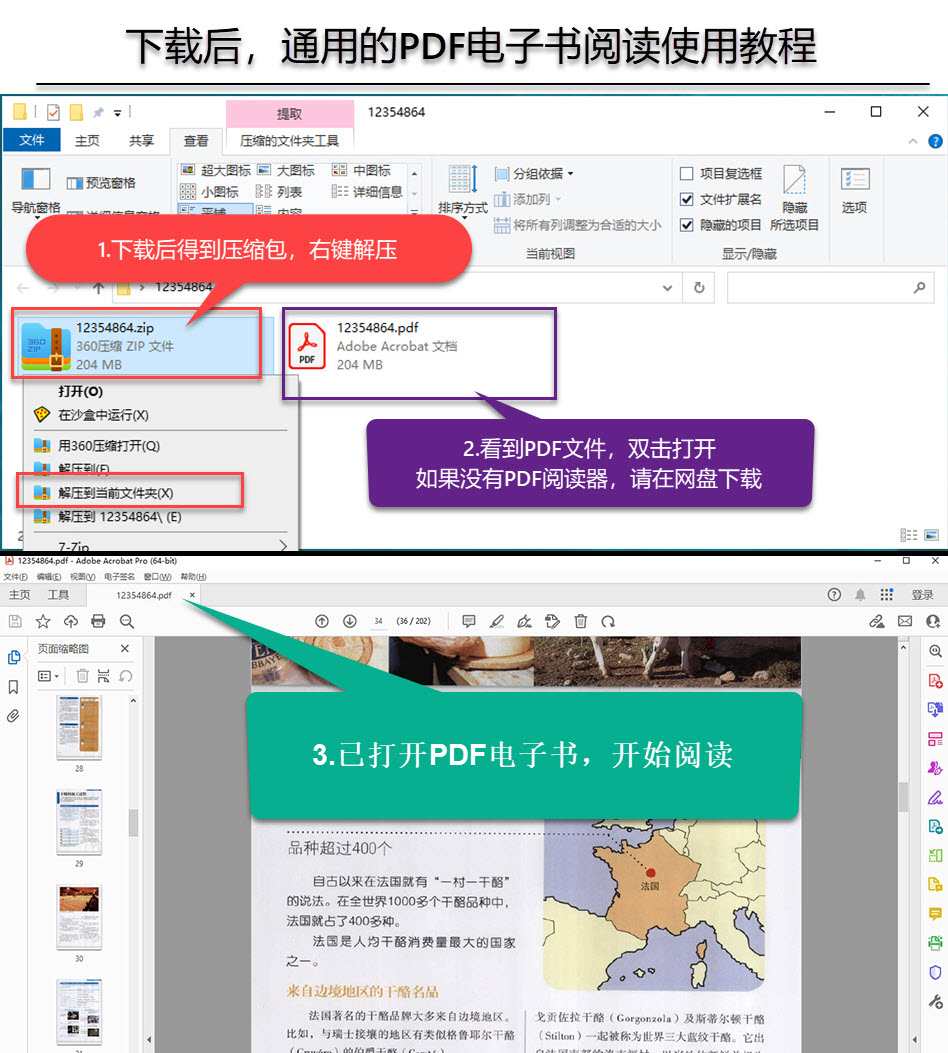相平衡.相图和相变-其热力学基础-第二版-(影印版)
本书特色
[
《相平衡、相图和相变——其热力学基础(第二版)(英文影印版)》主要内容为现代计算机应用观点下的热力学基本原理。 化学平衡和化学变化的理论基础也是本书的内容之一,其重点在于相图的性质。本书从基本原理出发,讨论延及多相的系统。第二版新增加的内容包括不可逆热力学、极值原理和表面、界面热力学等等。 平衡条件的理论刻画、系统的平衡状态和达到平衡时的变化都以图解的形式给出。
《相平衡、相图和相变——其热力学基础(第二版)(英文影印版)》适合材料科学与工程领域的研究人员、研究生和高年级本科生阅读。
]
内容简介
[
《相平衡、相图和相变——其热力学基础(第二版)》是影印版英文专著,原书由剑桥大学出版社于2008年出版。相平衡、相变等热力学原理是理解、设计材料属性的基础。计算工具的出现使材料学家能够处理越来越复杂的情况,但对于热力学基础理论的理解也越来越重要。本书图文并茂,深入浅出地讲解了热力学原理以及在计算机计算中的应用,对于材料科学、材料工程方面的研究者会有很大帮助。
]
目录
preface to second edition page xiipreface to first edition xiii1 basic concepts of thermodynamics 1.1 external state variables 1.2 internal state variables 1.3 the first law of thermodynamics 1.4 freezing-in conditions 1.5 reversible and irreversible processes 1.6 second law of thermodynamics 1.7 condition of internal equilibrium 1.8 driving force 1.9 combined first and second law 1.10 general conditions of equilibrium 1.11 characteristic state functions 1.12 entropy 2 manipulation of thermodynamic quantities 2.1 evaluation of one characteristic state function from another 2.2 internal variables at equilibrium 2.3 equations of state 2.4 experimental conditions 2.5 notation for partial derivatives 2.6 use of various derivatives 2.7 comparison between cv and cp 2.8 change of independent variables 2.9 maxwell relations 3 systems with variable composition 3.1 chemical potential 3.2 molar and integral quantities 3.3 more about characteristic state functions 3.4 additivity of extensive quantities. free energy and exergy 3.5 various forms of the combined law 3.6 calculation of equilibrium 3.7 evaluation of the driving force 3.8 driving force for molecular reactions 3.9 evaluation of integrated driving force as function of t or p 3.10 effective driving force 4 practical handling of multicomponent systems 4.1 partial quantities 4.2 relations for partial quantities 4.3 alternative variables for composition 4.4 the lever rule 4.5 the tie-line rule 4.6 different sets of components 4.7 constitution and constituents 4.8 chemical potentials in a phase with sublattices 5 thermodynamics of processes 5.1 thermodynamic treatment of kinetics of internal processes 5.2 transformation of the set of processes 5.3 alternative methods of transformation 5.4 basic thermodynamic considerations for processes 5.5 homogeneous chemical reactions 5.6 transport processes in discontinuous systems 5.7 transport processes in continuous systems 5.8 substitutional diffusion 5.9 onsager’s extremum principle 6 stability 6.1 introduction 6.2 some necessary conditions of stability 6.3 sufficient conditions of stability 6.4 summary of stability conditions 6.5 limit of stability 6.6 limit of stability against fluctuations in composition 6.7 chemical capacitance 6.8 limit of stability against fluctuations of internal variables 6.9 le chatelier’s principle 7 applications of molar gibbs energy diagrams 7.1 molar gibbs energy diagrams for binary systems 7.2 instability of binary solutions 7.3 illustration of the gibbs–duhem relation 7.4 two-phase equilibria in binary systems 7.5 allotropic phase boundaries 7.6 effect of a pressure difference on a two-phase equilibrium 7.7 driving force for the formation of a new phase 7.8 partitionless transformation under local equilibrium 7.9 activation energy for a fluctuation 7.10 ternary systems 7.11 solubility product 8 phase equilibria and potential phase diagrams 8.1 gibbs’ phase rule 8.2 fundamental property diagram 8.3 topology of potential phase diagrams 8.4 potential phase diagrams in binary and multinary systems 8.5 sections of potential phase diagrams 8.6 binary systems 8.7 ternary systems 8.8 direction of phase fields in potential phase diagrams 8.9 extremum in temperature and pressure 9 molar phase diagrams 9.1 molar axes 9.2 sets of conjugate pairs containing molar variables 9.3 phase boundaries 9.4 sections of molar phase diagrams 9.5 schreinemakers’ rule 9.6 topology of sectioned molar diagrams 10 projected and mixed phase diagrams 10.1 schreinemakers’ projection of potential phase diagrams 10.2 the phase field rule and projected diagrams 10.3 relation between molar diagrams and schreinemakers’ projected diagrams 10.4 coincidence of projected surfaces 10.5 projection of higher-order invariant equilibria 10.6 the phase field rule and mixed diagrams 10.7 selection of axes in mixed diagrams 10.8 konovalov’s rule 10.9 general rule for singular equilibria 11 direction of phase boundaries 11.1 use of distribution coefficient 11.2 calculation of allotropic phase boundaries 11.3 variation of a chemical potential in a two-phase field 11.4 direction of phase boundaries 11.5 congruent melting points 11.6 vertical phase boundaries 11.7 slope of phase boundaries in isothermal sections 11.8 the effect of a pressure difference between two phases 12 sharp and gradual phase transformations 12.1 experimental conditions 12.2 characterization of phase transformations 12.3 microstructural character 12.4 phase transformations in alloys 12.5 classification of sharp phase transformations 12.6 applications of schreinemakers’ projection 12.7 scheil’s reaction diagram 12.8 gradual phase transformations at fixed composition 12.9 phase transformations controlled by a chemical potential 13 transformations in closed systems 13.1 the phase field rule at constant composition 13.2 reaction coefficients in sharp transformations for p = c + 13.3 graphical evaluation of reaction coefficients 13.4 reaction coefficients in gradual transformations for p = c 13.5 driving force for sharp phase transformations 13.6 driving force under constant chemical potential 13.7 reaction coefficients at constant chemical potential 13.8 compositional degeneracies for p = c 13.9 effect of two compositional degeneracies for p = c . 14 partitionless transformations 14.1 deviation from local equilibrium 14.2 adiabatic phase transformation 14.3 quasi-adiabatic phase transformation 14.4 partitionless transformations in binary system 14.5 partial chemical equilibrium 14.6 transformations in steel under quasi-paraequilibrium 14.7 transformations in steel under partitioning of alloying elements 15 limit of stability and critical phenomena 15.1 transformations and transitions 15.2 order–disorder transitions 15.3 miscibility gaps 15.4 spinodal decomposition 15.5 tri-critical points 16 interfaces 16.1 surface energy and surface stress 16.2 phase equilibrium at curved interfaces 16.3 phase equilibrium at fluid/fluid interfaces 16.4 size stability for spherical inclusions 16.5 nucleation 16.6 phase equilibrium at crystal/fluid interface 16.7 equilibrium at curved interfaces with regard to composition 16.8 equilibrium for crystalline inclusions with regard to composition 16.9 surface segregation 16.10 coherency within a phase 16.11 coherency between two phases 16.12 solute drag 17 kinetics of transport processes 17.1 thermal activation 17.2 diffusion coefficients 17.3 stationary states for transport processes 17.4 local volume change 17.5 composition of material crossing an interface 17.6 mechanisms of interface migration 17.7 balance of forces and dissipation 18 methods of modelling 18.1 general principles 18.2 choice of characteristic state function 18.3 reference states 18.4 representation of gibbs energy of formation 18.5 use of power series in t 18.6 representation of pressure dependence 18.7 application of physical models 18.8 ideal gas 18.9 real gases 18.10 mixtures of gas species 18.11 black-body radiation 18.12 electron gas 19 modelling of disorder 19.1 introduction 19.2 thermal vacancies in a crystal 19.3 topological disorder 19.4 heat capacity due to thermal vibrations 19.5 magnetic contribution to thermodynamic properties 19.6 a simple physical model for the magnetic contribution 19.7 random mixture of atoms 19.8 restricted random mixture 19.9 crystals with stoichiometric vacancies 19.10 interstitial solutions 20 mathematical modelling of solution phases 20.1 ideal solution 20.2 mixing quantities 20.3 excess quantities 20.4 empirical approach to substitutional solutions 20.5 real solutions 20.6 applications of the gibbs–duhem relation 20.7 dilute solution approximations 20.8 predictions for solutions in higher-order systems 20.9 numerical methods of predictions for higher-order systems 21 solution phases with sublattices 21.1 sublattice solution phases 21.2 interstitial solutions 21.3 reciprocal solution phases 21.4 combination of interstitial and substitutional solution 21.5 phases with variable order 21.6 ionic solid solutions 22 physical solution models 22.1 concept of nearest-neighbour bond energies 22.2 random mixing model for a substitutional solution 22.3 deviation from random distribution 22.4 short-range order 22.5 long-range order 22.6 long- and short-range order 22.7 the compound energy formalism with short-range order 22.8 interstitial ordering 22.9 composition dependence of physical effects references index
封面

书名:相平衡.相图和相变-其热力学基础-第二版-(影印版)
作者:希勒特
页数:510
定价:¥89.0
出版社:北京大学出版社
出版日期:2014-08-01
ISBN:9787301245552
PDF电子书大小:143MB 高清扫描完整版
本文标题:《相平衡.相图和相变-其热力学基础-第二版-(影印版)》PDF下载
资源仅供学习参考,禁止用于商业用途,请在下载后24小时内删除!

